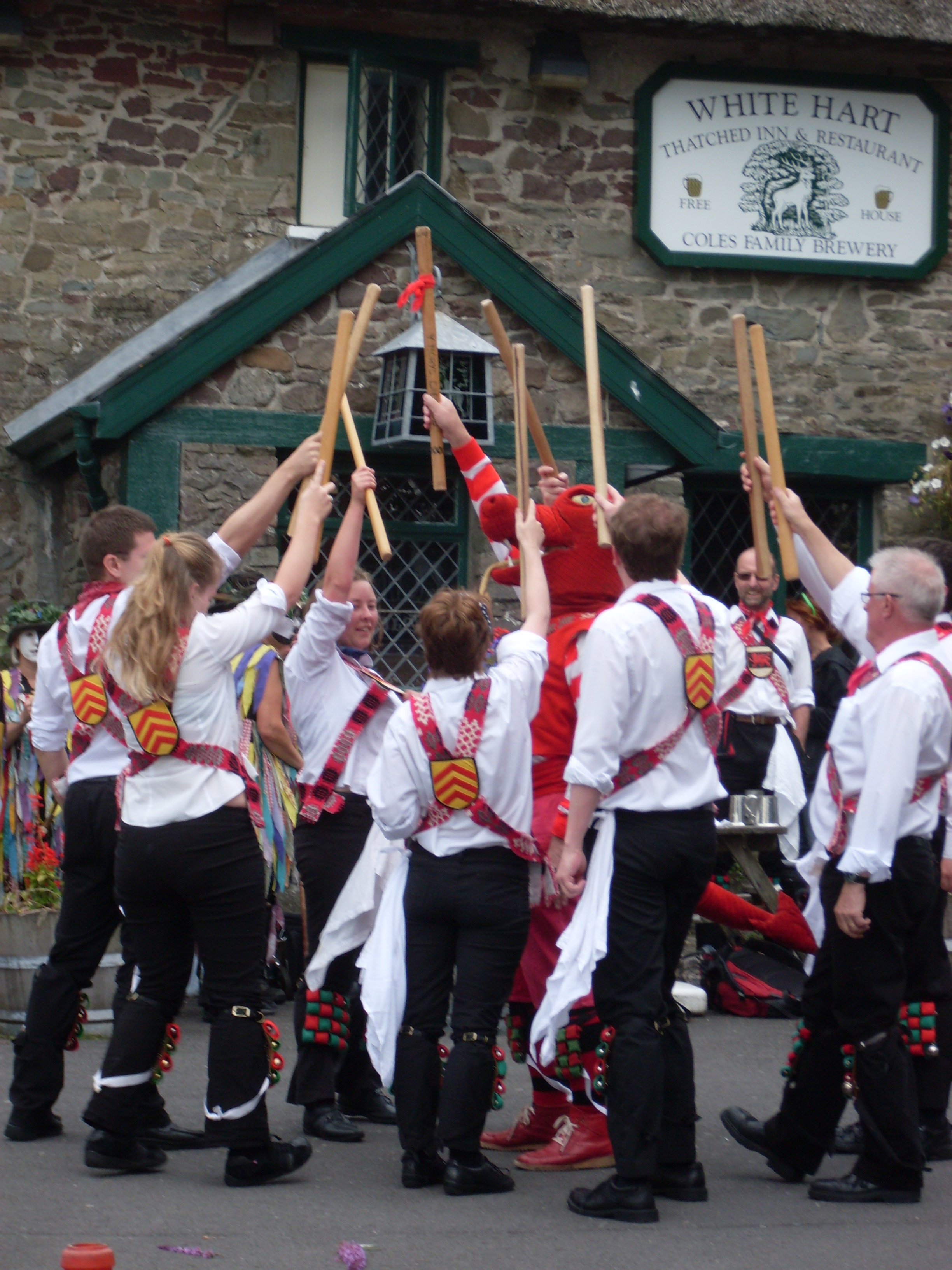|
Călușari
The Călușari (, ; ; singular: Călușar) are the participants to an old traditional Romanian dance known as the . "Căluș" translates to horse, but in an endearing form. Originally Romanian, the practice later spread to North Bulgaria. From three weeks after Easter until Pentecost, called in Romanian, for around two weeks they have traditionally travelled to all their local communities where they would dance, accompanied by a few fiddlers. History The origins of the Călușari are unknown, although the first written attestations are from the 17th-century musical notations of Ioan Căianu. Romanian historian of religion Mircea Eliade noted that "Although the oath taken is made in the name of God, the mythico-ritual scenario enacted by the calusari has nothing in common with Christianity" and that, in the 19th century at least, there was clerical opposition to the group, with its members being excluded from taking communion for three years in some regions. Etymology ... [...More Info...] [...Related Items...] OR: [Wikipedia] [Google] [Baidu] |
Ioan Căianu
Johannes Caioni (''Ion Căian'' or ''Căianu'' in Romanian language, Romanian or ''Kájoni János'' in Hungarian language, Hungarian; 8 March 1629 – 25 April 1687) was a Transylvanian Franciscan friar and Roman Catholic Church, Roman Catholic priest, musician, folklorist, Humanism, humanist, constructor and repairer of Organ (music), organs of Romanians, Romanian origin (according to his own testimony, "''Natus valachus sum''" - "I was born a Vlachs, Vlach"). Biography Caioni was born in Kiskaján (Căianu Mic), in the Principality of Transylvania (1570–1711), Principality of Transylvania (now in Bistrița-Năsăud County, Romania). He was raised in Kolozsvár (Cluj-Napoca) and Csíksomlyó (Șumuleu Ciuc). He was of a Nobility and royalty of the Kingdom of Hungary, noble family — Caioni's aunt was the wife of a garrison commander in Csíkszereda (Miercurea Ciuc). Through her connections, he was admitted in the Franciscan monastery of Csíksomlyó (Șumuleu Ciuc). Caioni s ... [...More Info...] [...Related Items...] OR: [Wikipedia] [Google] [Baidu] |
Morris Dances
Morris dancing is a form of English folk dance. It is based on rhythmic stepping and the execution of choreographed figures by a group of dancers in costume, usually wearing bell pads on their shins, their shoes or both. A band or single musician, also costumed, will accompany them. Sticks, swords, handkerchiefs, and a variety of other implements may be wielded by the dancers. Morris dancing first appeared in England in the 15th century. Its earliest surviving mention dates to 1448 and records the payment of seven shillings to Morris dancers by the Goldsmiths' Company in London. The term ''Morris'' derives from the Spanish term , although Morris dancing has no known historical connection to the Moors. Three prominent groups organise and support Morris in England: Morris Ring, Morris Federation and Open Morris; all three organisations have members from other countries as well. There are around 150 Morris sides (or teams) in the United States. English immigrants form a large pa ... [...More Info...] [...Related Items...] OR: [Wikipedia] [Google] [Baidu] |
